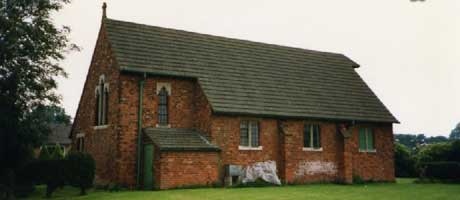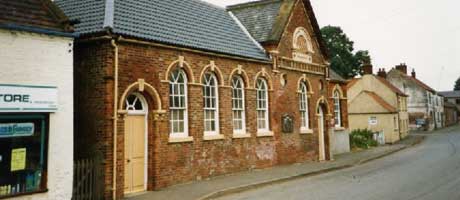Garthorpe
The parish of Garthorpe is situate at the northern extremity of the Isle of Axholme and was formerly a hamlet of neighbouring Luddington, at a time when the Isle consisted of only eight parishes, before the emergence of the present day total of twelve.
Garthorpe village today, well off the main road system, is pleasantly quiet and retains much of the rural quality of times past. History relates to this place at one period receiving status as a Market Town, but the market was in later years given over to Crowle.
Previous to the great drainage project by Cornelius Vermuyden, in the early 17th century, Garthorpe stood on a bank of the eastern arm of the old river Don. This river formed the County boundary and separated the two communities of Garthorpe (Lincolnshire) and Fockerby (Yorkshire). Today the two villages appear as one but careful observation reveals the dip of the old river bed running parallel along Garthorpe's High Street and West End.
A large estate, part of which included Garthorpe, was left by Mrs. Mary Ramsden, in 1745, to the Master and Fellows of Catherine Hall, in the University of Cambridge. It was "for making additional buildings, and for the support of six fellows and ten scholars, out of regard to the memory of her kinsman, Robert Skerne, who had heretofore been a benefactor to the same College; and that the natives of Yorkshire and Lincolnshire should have the preference." A legacy of this bequest is College Farm, an attractive homestead on the approach road into the village from Luddington.
Garthorpe's own primary school is no longer in use, instead the children attend The school at Luddington and transfer at senior age to North Axholme Comprehensive at Crowle.
The little parish church of St. Mary with its beautifully maintained churchyard is situated along Shore Road, as is the present Post Office. On the High Street can be found Garthorpe's only shop, and a few yards further down stands the Wesleyan Chapel, a substantial building, enlarged in 1883 and abutting on to a Sunday School, erected in 1888.
At the present tine Garthorpe has but one public house, The Bay Horse, but over the road in former times stood another, The Plough Inn. A third, Webb's Hotel could be seen on Garthorpe Shore, when this place was noted for its strategic ferry crossing over the River Trent to Burton upon Stather.
Evidence of at least one Corn Windmill within the parish is captured on a striking old photograph belonging to local resident, Mr. Gerald Reed. The mill, located off the Adlingfleet roadway was, according to the picture, four storeys in height, Fockerby, for its part, possessed a handsome Post Mill.
Although the population of the Isle is generally on the increase, the northern villages, including Garthorpe, remain little changed. In the 19th century, from a period 1841-61, the village reached a total in excess of 500 inhabitants. The present day population of Garthorpe, with Fockerby, is recorded as just 380. Names long associated with Garthorpe and district include Buttrick, Garner, Gilleard, Margrave, Reed and Scholey.


